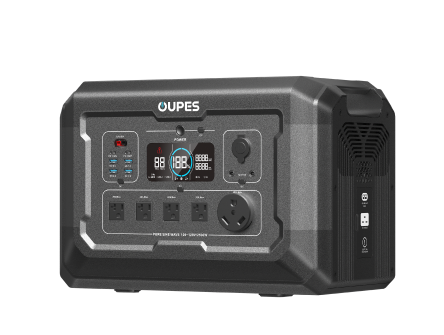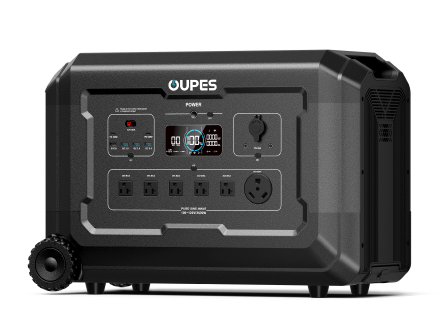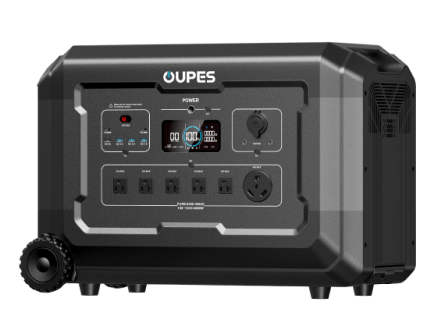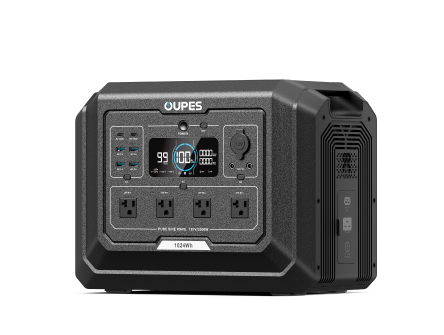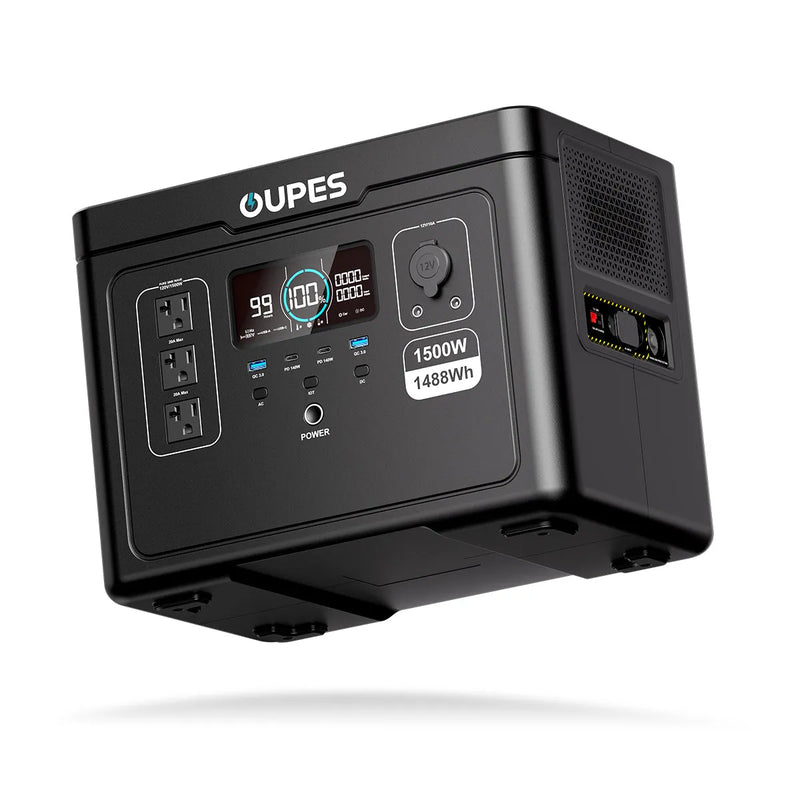
Harnessing the power of the sun to generate electricity isn't just for the energy giants anymore. With portable solar panels and reliable power stations now available to consumers, anyone can enjoy energy independence—whether camping in the wilderness, preparing for emergencies, or powering devices at home. But how exactly do you charge a power station using solar panels? That’s where this guide comes in.
In the sections below, you'll discover the key principles behind solar charging, step-by-step setup instructions, and expert tips to get the most out of your system. Whether you're a solar novice or a seasoned off-grid enthusiast, there's valuable insight here for you.
Understanding Solar Panels and Power Stations
Solar panels and power stations are a perfect match, but they operate based on distinct technologies that must work in harmony. A solar panel converts sunlight into electricity using photovoltaic (PV) cells. When sunlight hits these cells, it excites electrons and generates a direct current (DC) of electricity. This energy needs to be regulated and stored, which is where the power station comes in.
Most modern power stations include a built-in battery, charge controller, and inverter. The battery stores the electricity, the charge controller manages the voltage and current coming from the solar panel, and the inverter transforms DC electricity into alternating current (AC), making it usable for everyday electronics and appliances.
When pairing solar panels with a power station, it's crucial to ensure compatibility. Not all solar panels are created equal, and the wattage, voltage range, and connector type must align with the specifications of your power station. OUPES power stations, for example, support a wide range of solar panels and are designed with user-friendly MPPT (Maximum Power Point Tracking) technology to increase charging efficiency.
Before charging, users should also consider the battery capacity (measured in watt-hours, Wh) and how long it will take to recharge fully based on the panel’s output. For instance, if you have a 1,000Wh power station and a 100W solar panel, it would take roughly 10 hours of full sunlight to recharge, assuming 100% efficiency—which is rare. More likely, it would take longer due to losses and changing sunlight conditions.
Setting Up Your Solar Charging System
Setting up a solar charging system involves more than just plugging in a panel and leaving it in the sun. First, choose an open, sunny location free from shadows cast by trees, buildings, or other obstructions. Even partial shade can drastically reduce the efficiency of solar panels.
Next, connect the solar panel to the power station using the appropriate input port. Most units, including those from OUPES, provide clear indicators when charging has started. It’s essential to match the panel’s voltage and wattage with what the power station accepts to prevent damage or poor performance.
Secure the solar panel at an optimal angle—typically around 30 to 45 degrees—facing true south in the northern hemisphere (or north in the southern hemisphere). Some users opt for adjustable panel mounts that let them tweak the angle throughout the day for maximum sunlight exposure. Others prefer folding or briefcase-style panels for portability and ease of use.
It’s also worth noting that clean panels perform better. Dust, pollen, or bird droppings can block sunlight and lower efficiency. A gentle wipe-down with a damp cloth once in a while will help maintain performance.
If you plan to use your system in cloudy or winter conditions, consider investing in additional panels or a high-capacity battery so you’re not caught short on power when you need it most. OUPES offers expansion battery options to extend runtime even further.
Maximizing Efficiency in Different Weather Conditions
Solar charging performance is closely tied to the weather. On bright, cloudless days, panels perform near their rated capacity. But what happens when it's cloudy, raining, or snowy?
In overcast conditions, solar panels still generate power, albeit at a reduced rate—usually around 10–25% of their rated output. On rainy days, performance may drop further, though some energy can still be collected. Snow presents both challenges and opportunities: while snow cover will block the panel from working, freshly fallen snow can reflect additional sunlight, boosting power generation once the panels are cleared.
To address these variables, users can implement several strategies. First, consider purchasing solar panels with a higher wattage than you think you need. This provides more flexibility during less-than-ideal conditions. For instance, two 100W panels may perform better overall than a single 200W panel when spread out in changing light conditions.
Second, use panels equipped with high-efficiency monocrystalline cells, which tend to perform better in low-light environments. OUPES panels, for example, are designed for maximum conversion efficiency, even when weather conditions are not optimal.
Finally, keep your power station in a shaded or cool location while it charges. While solar panels need sunlight, batteries perform better and last longer when kept away from direct heat. Charging efficiency and overall battery health improve significantly in controlled temperatures.
Common Mistakes to Avoid When Charging with Solar Panels
Even experienced users can fall into common traps when charging a power station with solar panels. One frequent issue is mismatching components—using a solar panel with a voltage or connector type incompatible with the power station. Always check the manufacturer’s guidelines, and if necessary, use an adapter or third-party solar charge controller for a safe connection.
Another mistake is positioning the panels incorrectly. Placing them flat on the ground or in shaded areas can drastically reduce output. It’s important to align them with the sun’s path and adjust their angle seasonally for optimal results.
Some users also overlook the importance of clean connections. Dirty or corroded ports and cables can cause poor charging or no charging at all. Check your connections regularly and keep them dry and clean.
Failing to monitor charging status can also be an issue. While modern power stations often have built-in screens or apps to track progress, it’s good practice to periodically check for signs of trouble. If the panel is in full sun but not charging, it could indicate a wiring issue or fault in the panel or station.
Lastly, avoid over-reliance on solar panels in situations where sunlight is unreliable. Have backup charging methods available when possible, such as wall outlets or car adapters. With OUPES power stations, multi-source charging makes it easy to switch between solar, AC, and vehicle charging depending on your situation.
Why OUPES Makes Solar Charging Easier
While many brands offer solar-compatible power stations, OUPES stands out for its dedication to user-friendly, efficient systems. With plug-and-play solar input, MPPT controllers built-in, and smart display panels, OUPES products make solar charging simpler, even for beginners.
OUPES power stations are also built to last, featuring high-capacity LiFePO4 batteries that offer longer lifespans and more charge cycles compared to traditional lithium-ion alternatives. This means more consistent performance and peace of mind, especially for users who rely on their systems for off-grid power, travel, or emergency preparedness.
In addition, OUPES offers a range of compatible solar panels designed to integrate seamlessly with their power stations. These panels are lightweight, foldable, and come with waterproof ratings for outdoor use. Whether you need backup power at home or want to stay powered during a long camping trip, the OUPES ecosystem is designed with versatility and reliability in mind.
For users interested in maximizing energy independence, OUPES also supports power station and expansion battery bundles—ideal for high-demand devices or longer periods without sunlight.
By combining smart design with premium components, OUPES makes it easier than ever to harness the sun's power and stay charged wherever life takes you.
Conclusion: Embrace Solar Charging with Confidence
Charging a power station with solar panels is a smart, eco-friendly solution for anyone who values energy independence, emergency preparedness, or outdoor adventures. With the right setup, positioning, and maintenance, you can enjoy reliable power without relying on the grid.
Whether you're preparing for hurricane season, camping in the wilderness, or looking for a backup power option for your home, a solar-powered system is a powerful investment in your self-sufficiency. With user-friendly solutions like those from OUPES, tapping into solar energy has never been more accessible. So take the time to learn, prepare, and power your life—naturally and efficiently.

